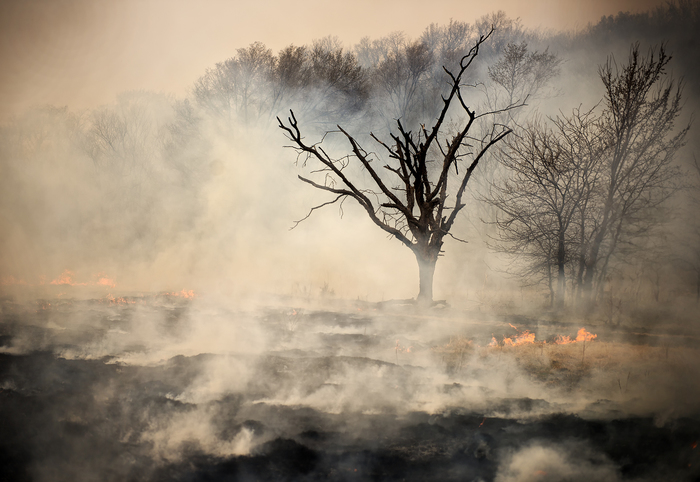Burning the Prairie

School children who visit the tallgrass prairie are asked the question: “True or False; The best way to manage a prairie is to leave it alone”. You might be surprised to discover that the majority of students think that leaving a prairie alone is the best management tool. Research shows that this is not the case; managing a prairie with the use of fire is the best way to keep a prairie healthy and in prime condition.
Burning a prairie – at least every three years – helps to remove old, dead vegetation and to release trapped nutrients. Additionally, the surface of the ground is warmer after a fire (black charcoal absorbs all of the wavelengths of sunlight) and the warm soil is better able to facilitate new growth of grass. The open ground is also better able to readily absorb rain during spring showers, whereas the unburned pastures have some of the rain displaced by the dead vegetation.
Regular burning of the prairie not only facilitates new plant growth it also discourages the growth of other kinds of plants, namely certain trees and shrubs. If a prairie is left alone, i.e. left unburned, trees such as the Eastern Red Cedar and shrubs like the Rough-leaf Dogwood and the Smooth Sumac, can set down deep roots that allow them to get firmly established (roots able to reach groundwater). Once established, these species can shade out the more desirable grasses and wildflowers and out-compete with them for the available water and soil nutrients. Trees and shrubs possess bark and that protective layer of dead tissue may keep them from being damaged by fire. Simply – fire needs to be frequent enough in a grassland to kill developing small shrubs and trees before they get too big and are able to protect themselves from fire.
Prairies in the Flint Hills that are “left alone” will eventually turn into shrublands or forests.
